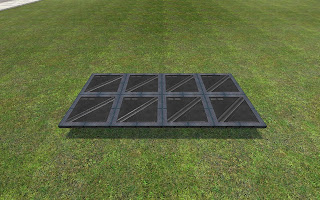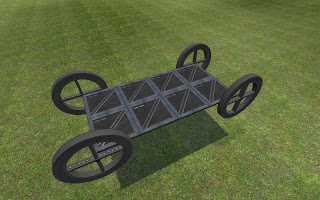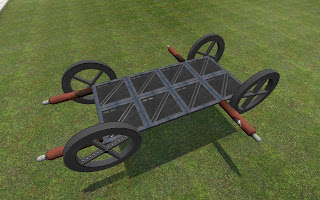More updates!
This time, they're about wired hoverballs. In some servers I've been in, some people wonder how I make my wired things go up or down with wired (as opposed to regular) hoverballs. Also a point of discussion is h
ow to make thrusters bidirectional. You probably think, "I've checked the box, but I have no new outputs. Huh?". No worries, I'll explain both in this post.
First up are the
hoverballs. They have two inputs, ZVelocity and Hovermode. I'm pretty sure that in the last (outdated) version of Wire, they had a third input, ZPosition, I think.
Hoverballs are pretty simple to use, but moving them is a bit harder. Hovermode is self-explanatory, and it is a 1/0 input, meaning if the value is 0, it will be off, and if the value is 1, it will be on. ZVelocity is sometimes tricky to use. I usually move wired hoverballs up and down using:
-Add gates
-Negate gates
-
Advanced Pod Controllers (APC)[Optional]The method of linking them up is this:
1) Wire the A of the Negate to the Adv. Pod input of the button you want it to go down with. If you're not using an APC, make sure that the value is positive. It doesn't necessarily have to be 1.
2) Wire the A of the add to the Adv. Pod input of the button you want it to go up with. Same as above.
3) Wire the B of the add to the Negate gate.
4) Wire the ZVelocity of any hoverballs you wish to control to the Add gate.
Quick explanation:
When you press the button that triggers the Negate gate, the ZVelocity registers it as a -1 through the add gate, and the hoverball knows that it needs to go down. When you press the button that triggers the Add gate, the opposite thing happens. If you press both buttons, nothing will happen because the values cancel each other out (-1+1=0).
If you still have a version of Wire that has the third input, ZPosition, the routine is basically the same, except for the fact that you need to add an accumulator chip (Gate-Time). Wire the hoverballs to the accumulator and the accumulator to the add gate.
On to
Thrusters:
If you want one thruster to go backwards and forwards instead of 2 doing the same thing, read on.
This routine is basically the same as for the hoverballs. You need:
-1 Add gate
-1 Negate gate
-1 thruster
-An APC (Pod Controller)[Optional]
1) Wire the A of the Add gate to the value which should make it go forward, and the B to the Negate gate.
2) Wire the Negate to the value which should make it go backward.
3) Wire the thruster to the Add gate.
You're all set! Unfortunately, sometimes if you use 1 thruster instead of 2, you might get some deviation from the path that you wanted to take. This can be solved by using 2 thrusters with the above method, one at the (front/left/top) and one at the (back/right/bottom).
As always, if you have any questions or comments, please don't hesitate to email me.


